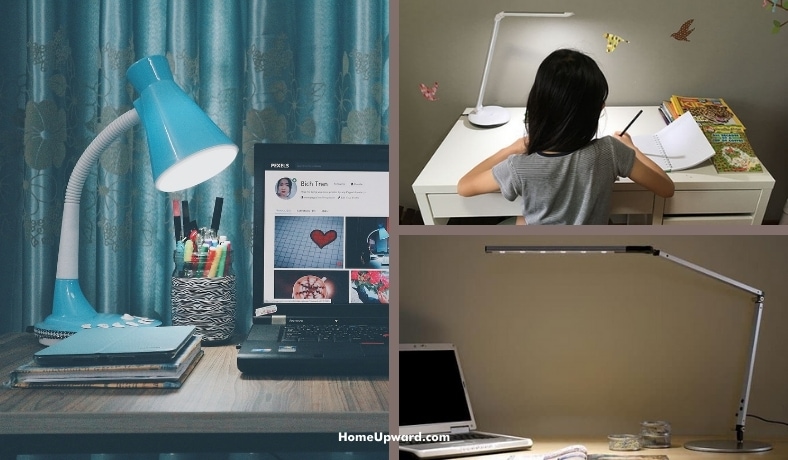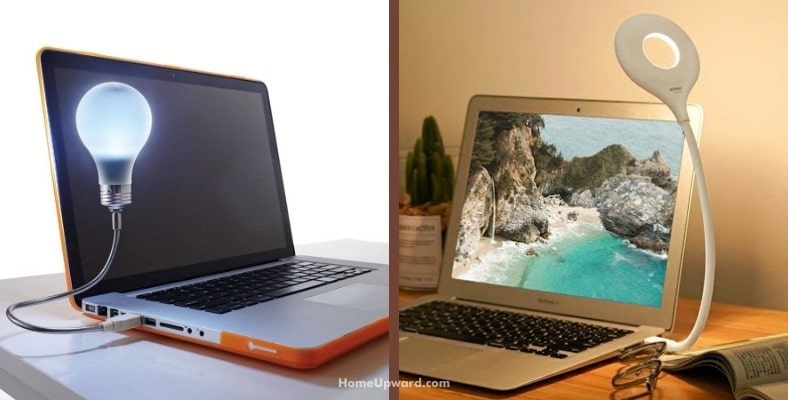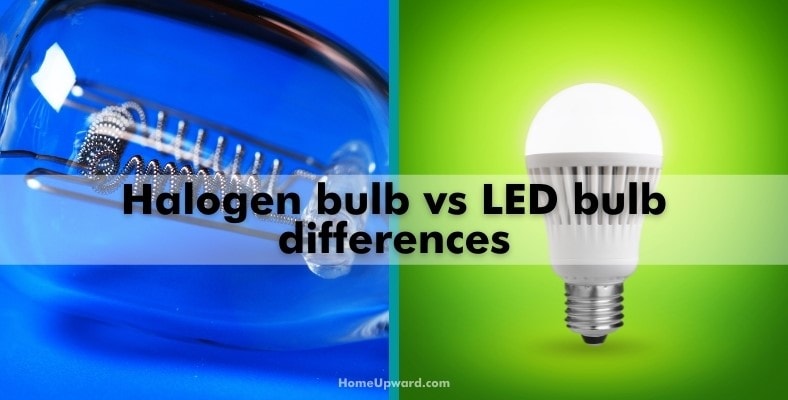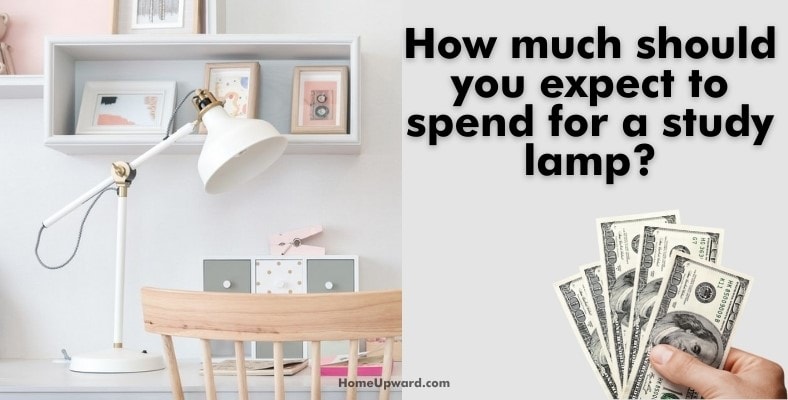Contents
What are the Benefits of a Good Desk Lamp for Studying?
Lamps, in general, are good for casting different kinds of light within a room, but desk lamps are made specifically to cast task lighting and more easily provide good lighting right where you need it.
- Unlike floor or table lamps, desk lamps are designed to cast light downwards instead of upwards and to the side, illuminating an object or your desk primarily.
- Desk lamps are better for your eyes for certain tasks: For example, reading, drawing, writing, or other focused tasks that can cause strain on the eyes under normal lighting conditions are relieved by using a desk lamp instead.
Desk lamps are the perfect light source to help illuminate these tasks and keep your eyes from working harder than necessary.
Is a Desk Lamp Worth It?
Not everyone will need a desk lamp, if you do a lot of reading or working at a desk you can definitely benefit from one. You’ll definitely want to figure out where to place your lamp for optimal lighting. A reading lamp, especially one with an LED bulb, is a must for students or people who spend a great deal of time reading or at a desk.
For home offices and studies or libraries as well as office desks, a desk lamp is the first defense against eye strain. They’re especially helpful for anyone with poor overhead lighting in their home.
In situations like that, a powerful lamp can make up for the lack of other high-quality light sources in the room, especially at night when you don’t have sunlight coming in through the windows. Even better, some are a smaller version of a 3-way lamp so you can change the brightness as needed.
What Light Color Helps You Read or Study?
As color is reflected in the wavelengths that make up light, bulbs can come in various colors and wavelengths that have differing effects. Color temperature is one of the most important factors to consider when it comes to light bulbs.
Cool-toned colors, like white, are better for focused activities and give off a great deal of brightness.
Blue wavelengths, which are found on the white end of the spectrum, improve memory and stimulate the mind, making it a great color for reading or studying.
This family of tones can also help improve mood and energy, so white lights are ideal for cognitive tasks during the daytime.
What Color Light is Best for Your Eyes at Night?
On the other hand, since blue wavelengths are mentally stimulating, they can be detrimental for someone reading at night before bed. This is why many scientists have cautioned the public to refrain from screen time before bed, as screens rely on blue light.
So the opposite, warm-toned colors are best for reading at night. Not only do warm colors like yellow help keep your eyes from straining to read in the dark, but they are also a calming and relaxing form of ambient light.
What’s more, they’re known not to disrupt sleep cycles, meaning that your sleep won’t be interrupted, so you can enjoy a whole night of rest after reading without compromising brightness levels.
How Many Lumens Do You Need for a Desk Lamp?
The lumen level will depend on the kind of task you need to illuminate. For simple tasks, like reading or writing for shorter durations of time, 450 lumens, or 40 watts, will be adequate.
However, if you perform more detailed and focused tasks at your desk, for example, ones that include small parts and fine or delicate actions, you’ll need a higher wattage.
Something around 60 to 75 watts (in the range between 800 and 1100 lumens) will better alleviate eye strain over longer durations of time.
Are USB Desk Lamps Any Good?
A USB desk lamp plugs into the USB port of your computer to power it. These lamps are usually compact and small and give off only a bit of light. Also, they won’t work without a laptop for power, which is generally backlit itself.
For shorter durations of time or in a pinch, USB desk lamps can provide enough light for reading or a less focus-intensive task. But for daily use, they may not be a good match for your everyday tasks.
Halogen Bulb vs LED Bulb Differences
In short, LED lights consume less energy while putting off more wattage than halogen or incandescent bulbs. LED bulbs also have a significantly longer life span and can often be adjusted for color temperature and wavelength, while halogen desk lamps operate at a fixed color.
Are LED Lights Good for Reading?
Not only are LED bulbs a greener source of light, but they last longer and are made to be directional, that is, emit light toward a specific area for a task. For this reason, they’re perfect for use as a desk lamp.
As LED lights can come in a variety of color temperatures and can sometimes be adjustable, they can provide good daytime and nighttime light sources for reading and studying.
Are LED Desk Lamps Safe?
The main drawback of LED desk lamps is that they can sometimes cause headaches for very sensitive users. This is because LEDs emit a mostly imperceptible strobe or flicker effect as they work, which, over time, can cause strain or headaches for those who are very sensitive to light output.
However, most high-quality LED light manufacturers have worked to lessen this and mitigate the effects of flickering.
Otherwise, LEDs are a highly safe source of light. Overall, too much exposure to blue light, as mentioned before, can have negative effects on circadian rhythms as well as eye health.
Balancing blue light LEDs with warm-tone ones at night can help your eyes stay comfortable and healthy regardless of the task.
How Much Should You Expect to Spend for a Study Lamp?
Study lamps are available in a wide range of sizes, qualities, and price ranges. Even LED lamps can vary wildly in price. Since they are available at many online and in-store retailers, there is an option available for just about every budget.
For quality lamps, expect to find options within a $30 to $200 range, considering size, finish, wattage, and other important and unique factors.







